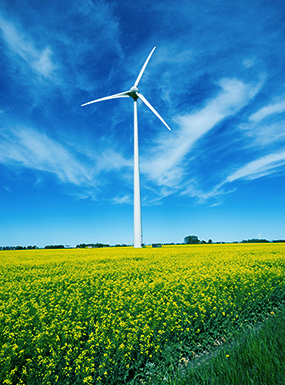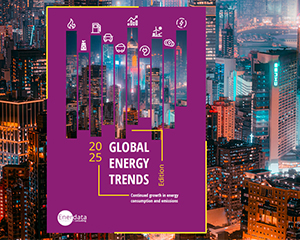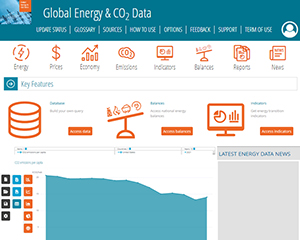世界エネルギー推移統計
2024年世界エネルギーデータ、脱炭素化指標にアクセス
Enerdataのインタラクティブ・データ・ツールへようこそ。
2024年の世界のエネルギーと気候のデータ、脱炭素化の主要指標にアクセスし、世界地図やグラフを閲覧してエネルギー産業の最新データとトレンドを探ることができます。
また、世界地図やグラフを閲覧して、エネルギー産業の最新データや動向を探ることができます:
- 包括的なデータアクセス: 石油、ガス、石炭、電力、再生可能エネルギーの生産、消費、取引に関するデータを、燃料燃焼によるCO2排出量とともにご覧いただけます。
- グローバルなカバレッジ: 1990年から2024年までの世界60カ国・地域のデータを網羅。
ユーザーフレンドリーな機能
- アニメーションによるデータの進化: 1990年から2024年までの時系列トレンドを視覚化。
- インタラクティブな地図: 拡大・縮小コントロールでエリアを簡単に選択。
- 国別ベンチマーク: 各国のデータを比較。
- 柔軟な期間選択: 任意の期間を選択してデータを表示。
- データのエクスポート: 世界全体または特定のエネルギー源別にデータをエクスポート。
最新のエネルギー・トレンドとデータの探索を開始し、一歩先を行く
世界脱炭素化指標
オレンジ色の数字:2024年のデータ
青色の数字:2023年のデータ
G20の統計および世界のその他の予測に基づく。
2024年の世界のエネルギー関連の主要数値
2024年版グローバル・エネルギー・トレンドは、重要なエネルギーデータに関する洞察を示し、COP28の誓約を評価し、現在のトレンドが2030年までに再生可能エネルギー容量の3倍とエネルギー効率の2倍をサポートするかどうかを判断する。
出版物をダウンロードするエネルギーの供給、需要、価格、ならびに温室効果ガス排出量(186か国)に関連した、この上なく包括的で最新なデータベースにアクセスしてください。
このサービスについて知る




